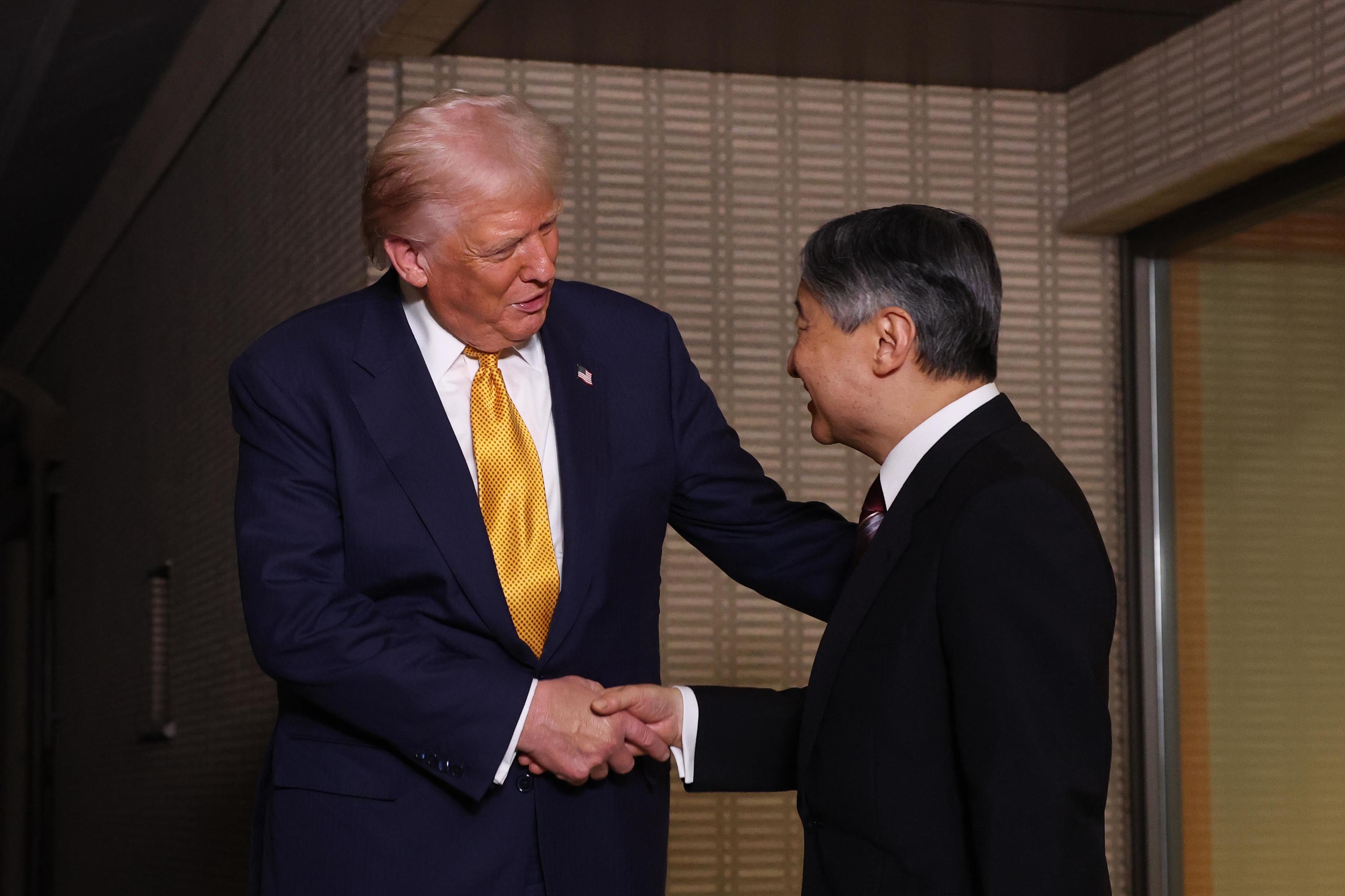Japan rolled out the red carpet for U.S. President Donald Trump on Monday, honored by local authorities on the second stop of an Asian tour that began on Sunday in Malaysia. He met with Emperor Naruhito in Tokyo, who welcomed him at the Imperial Palace. On Tuesday, Trump is expected to meet with the new Japanese Prime Minister, Sanae Takaichi, and later visit a U.S. military base south of the capital to deliver a speech aboard an aircraft carrier.
"He's a great man," Trump said during his meeting with the Japanese emperor. This is his fourth visit to Japan as U.S. President and the first since June 2019 when he attended the G-20 summit in Osaka. In Tokyo, Trump was courted with iconic landmarks illuminated in the colors of the American flag, and the state broadcaster NHK interrupted its programming to follow live the U.S. president's caravan touring the city on his way to meet Naruhito.
The Asian country is the sixth most important trading partner of Washington and a key cornerstone of U.S. strategy in the region. Both administrations share a traditional security alliance through a mutual defense pact that includes U.S. bases on Japanese soil and protection under the U.S. nuclear umbrella.
For Takaichi (64 years old), Trump's visit represents the first test of her diplomatic skills just a week after becoming Japan's first female prime minister. To break the ice, the new leader has the advantage of sharing with the Republican a special affinity for former Prime Minister Shinzo Abe, who forged a close personal relationship with Trump during his first term in the White House. Abe, assassinated in 2022 and who was Takaichi's political mentor, even shared several afternoons of golf and hamburgers with Trump between 2017 and 2019, both in Japan and the United States.
Unlike Abe, who enjoyed a certain political and economic stability at home during the ups and downs of Trump's first term, the current Japanese leader, at the helm of the Liberal Democratic Party (LDP), which has been in power almost uninterruptedly since its founding in 1955, governs in a minority and has too many internal fronts open, both due to economic storms and the corruption scandals that have long plagued her party. Takaichi is the fourth prime minister of the country in five years.
Like her predecessors, Takaichi has been a staunch advocate of Japan's rearmament, breaking with its traditional pacifist policy inherited from the post-war period. But she has gone a step further by promising last Friday to present a defense spending target equivalent to 2% of GDP (from the current level of around 1.8%) for the current fiscal year ending in March, two years earlier than previous governments had committed. However, this does not convince her Washington ally. Trump has publicly stated that the increase to 2% is still insufficient and that Tokyo needs to reach the 5% threshold he demanded from NATO member countries.
"Strengthening the alliance between Japan and the U.S. is the top priority of my administration, both in the diplomatic and security fields," Takaichi declared over the weekend after a call with Trump prior to their meeting this week. "I've heard good things about her. I think she's going to be fantastic," Trump said about his Japanese counterpart. "Prime Minister Abe was a great friend of mine, and he held her in high regard. That's a good sign. I'm looking forward to meeting her."
A point of friction between the two administrations is trade negotiations. Trump pressured Tokyo with several rounds of tariffs until lowering them to 15% (from 25%) on Japanese products imported in exchange for the Asian country's commitment to invest 550 billion dollars in the U.S., including increasing purchases of American agricultural products. This sparked controversy in Tokyo. To appease Trump before his arrival, Japan has prepared a purchase package that includes liquefied natural gas, trucks, and American soybeans.
Trump arrived in Japan after a marathon diplomatic day in Malaysia, where the annual summit of the Association of Southeast Asian Nations (ASEAN) was taking place. In Kuala Lumpur, the American president presided over a ceremony for the signing of a peace agreement between Thailand and Cambodia, two neighbors whose armies clashed in the summer at various points along their disputed border. He also closed agreements with these countries for the export of rare earth minerals. Additionally, Trump sought to reduce tensions with Brazil in a meeting with leader Lula da Silva.
The latest headline left by the Republican was the forecast of a "fantastic" trade agreement with China that he hopes to seal on Thursday in a meeting with President Xi Jinping in South Korea. This will be the most important moment of Trump's Asian tour, when the leaders of the world's two largest economies meet face to face. It could only be overshadowed if there is a surprise and the American also meets with North Korean leader Kim Jong-un. Trump has not hidden his desire to meet him during his trip to Korea, although there has been no news about Pyongyang's response. "I would love to meet with him," Trump said aboard Air Force One on his way to Tokyo.
